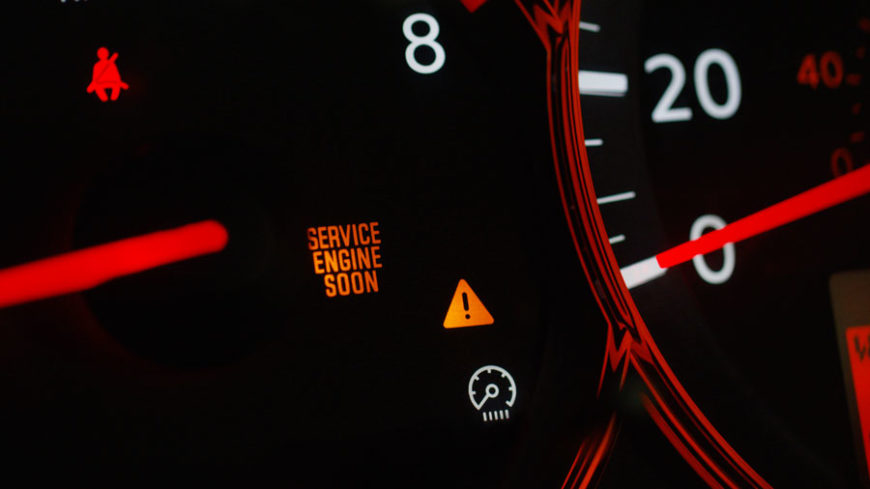What Are the Diy Tips for Fixing Emission Control System Problems?
If you are looking to fix emission control system problems on your own, start by checking for loose fuel cap, replacing oxygen sensor, and getting a diagnostic scan. Emission control system problems can be a common issue for car owners, leading to decreased fuel efficiency and potential failed emissions tests.
DIY tips for fixing these issues can help save time and money, while also ensuring your vehicle is running smoothly. By following simple steps such as properly tightening the fuel cap, replacing the oxygen sensor, and utilizing a diagnostic scan tool, you can address these problems efficiently.
Taking proactive measures to maintain your emission control system can not only improve your vehicle’s performance but also contribute to a cleaner environment.

Credit: www.wikihow.com
Common Emission Control System Problems
If you’re experiencing emission control system problems, there are some DIY tips you can try. Firstly, check the gas cap for a tight seal and that it’s not damaged. Secondly, inspect the oxygen sensor for any issues and replace if necessary.
Lastly, ensure there are no exhaust leaks and the catalytic converter is functioning properly.
Malfunctioning O2 Sensor |
|
|
One common problem that can arise in an emission control system is a malfunctioning O2 sensor. The O2 sensor, or oxygen sensor, monitors the level of oxygen in the exhaust gases. When it fails, it can lead to inefficient fuel consumption and increased emissions. Your vehicle’s check engine light may illuminate, indicating an issue with the O2 sensor. It is essential to address this problem promptly to ensure optimal performance and reduce harmful emissions. |
|
Catalytic Converter Issues |
|
|
Another potential problem that can affect the emission control system is issues with the catalytic converter. The catalytic converter plays a crucial role in reducing harmful pollutants in the exhaust gases. Over time, it can become clogged or damaged, resulting in decreased performance and increased emissions. Signs of a faulty catalytic converter include reduced acceleration, loud noises from the exhaust, or a rotten egg smell. If you suspect an issue with your catalytic converter, it is essential to have it inspected and repaired by a qualified mechanic. |
|
Loose Or Damaged Gas Cap |
|
|
A loose or damaged gas cap may seem like a minor issue, but it can have a significant impact on the emission control system. The gas cap seals the fuel tank to prevent fuel vapors from escaping into the atmosphere. If the cap is loose, damaged, or missing, it can lead to increased emissions and trigger the check engine light. Thankfully, this is an easy problem to fix. Simply ensure the gas cap is tight and in good condition. If necessary, replace it with a new one to maintain proper sealing and prevent emissions leakage. |

Credit: www.autozone.com
Diy Tips For O2 Sensor Issues
Identifying O2 Sensor Location
Locating the O2 sensor is crucial for accurate diagnosis and replacement.
Removing And Replacing O2 Sensor
Follow these steps to efficiently remove and install a new O2 sensor:
- Disconnect the negative battery cable.
- Locate the sensor near the exhaust manifold.
- Use a sensor socket to loosen and remove the old sensor.
- Apply anti-seize compound on the new sensor’s threads.
- Securely install the new sensor and reconnect the battery cable.
- Reset the Check Engine Light using an OBD-II scanner.
Remember to seek professional help if unsure during the process.
Fixing Catalytic Converter Problems
Ensuring your catalytic converter is functioning optimally is crucial for emission control system performance. Below are essential steps you can take to address catalytic converter issues.
Checking For Converter Clogs
1. Inspect the converter for visible debris buildup.
2. Look for physical damage, such as dents or holes.
3. Use a mallet to tap the converter and listen for rattling sounds.
Testing And Replacing The Converter
1. Run a diagnostic scan to identify specific issues.
2. Check the converter’s efficiency with an exhaust gas analyzer.
3. Replace the converter if it fails diagnostic tests.

Credit: www.wikihow.com
Dealing With Loose Or Damaged Gas Cap
If you’re experiencing emission control system problems, one of the common culprits could be a loose or damaged gas cap. The gas cap is an important component of the system as it helps to maintain the proper pressure inside the fuel tank, preventing fuel vapor leakage and reducing emissions.
Inspecting The Gas Cap Seal
The first thing you should do when dealing with a loose or damaged gas cap is to inspect the seal. The seal is what ensures a tight and secure fit between the gas cap and the fuel tank, preventing any fuel vapor from escaping.
To inspect the gas cap seal, follow these simple steps:
- Ensure the engine is off and the vehicle is parked in a safe, well-ventilated area.
- Locate the gas cap on your vehicle. It is usually found on the top or side of the fuel tank, near the rear of the vehicle.
- Carefully remove the gas cap from the fuel tank.
- Inspect the seal on the gas cap for any signs of damage, such as cracks, tears, or excessive wear.
- If the seal appears to be in good condition, proceed with tightening the gas cap securely back onto the fuel tank. If the seal is damaged, you will need to replace the gas cap.
Tightening Or Replacing The Gas Cap
If you find that the gas cap seal is intact, the next step is to ensure it is tightened properly. A loose gas cap can cause fuel vapor leakage, leading to emission control system problems. Here’s how you can tighten or replace the gas cap:
- Ensure the engine is off and the vehicle is parked in a safe, well-ventilated area.
- Remove the gas cap from the fuel tank.
- Inspect the threads on both the gas cap and the fuel tank for any debris or damage.
- Clean the threads using a soft cloth or brush to remove any dirt or debris.
- Place the gas cap back onto the fuel tank and screw it on firmly but not overly tight.
- If you still experience issues with a loose gas cap or suspect damage to the seal, it is recommended to replace the gas cap. Consult your vehicle’s manual or contact a professional for guidance on the correct gas cap replacement.
Remember, addressing a loose or damaged gas cap is a simple and cost-effective DIY solution to emission control system problems. By ensuring a proper seal and tight fit, you can help maintain the efficiency and performance of your vehicle’s emission control system.
Preventive Maintenance For Emission Control
Preventive maintenance for emission control is crucial to ensure your vehicle’s emission control system functions optimally. By taking proactive steps to maintain your vehicle, you can prevent emission control system problems from arising and avoid costly repairs. Here are some DIY tips for maintaining your emission control system:
Routine Obd-ii Scans
Regularly performing OBD-II scans can help you identify and address potential issues with your vehicle’s emission control system before they escalate. By using an OBD-II scanner, you can retrieve diagnostic trouble codes (DTCs) related to the emission control system, allowing you to take prompt corrective action.
Using Quality Fuel And Oil
Using high-quality fuel and oil can contribute to the longevity and efficiency of your vehicle’s emission control system. Opt for fuels and oils that meet the specifications recommended by your vehicle’s manufacturer to minimize the accumulation of deposits and contaminants that can hinder the proper functioning of emission control components.
Frequently Asked Questions For What Are The Diy Tips For Fixing Emission Control System Problems?
How Do You Fix An Emissions Control System?
Fixing an emissions control system involves identifying the issue, such as faulty sensors or a failing catalytic converter, and replacing or repairing the faulty components. It’s best to consult with a qualified technician who can diagnose and fix the problem efficiently.
How Do I Reset My Emission System?
To reset your emission system, disconnect the car’s battery for 30 minutes, then reconnect it. Drive the vehicle for at least 50 miles to complete the reset process. Check the owner’s manual for specific instructions.
What Does It Mean When Your Car Says Emission System Problem?
An emission system problem in your car indicates issues with controlling harmful emissions. It requires immediate attention to prevent further damage.
How Do You Clean An Emission System?
To clean an emission system: Use a fuel system cleaner designed for emissions, add it to your fuel tank, and run the engine. The cleaner will remove carbon deposits and other impurities, improving emissions performance.
Conclusion
To sum up, fixing emission control system problems can be done efficiently with the help of these simple DIY tips. By regularly inspecting and maintaining your vehicle, addressing issues promptly, and following the recommended guidelines, you can ensure a smoother and cleaner-running car.
Taking the time to understand the potential problems and their solutions will not only save you money but also contribute to a healthier environment. So, get started and take control of your vehicle’s emission system today. #SEO #unique #conclusion.

